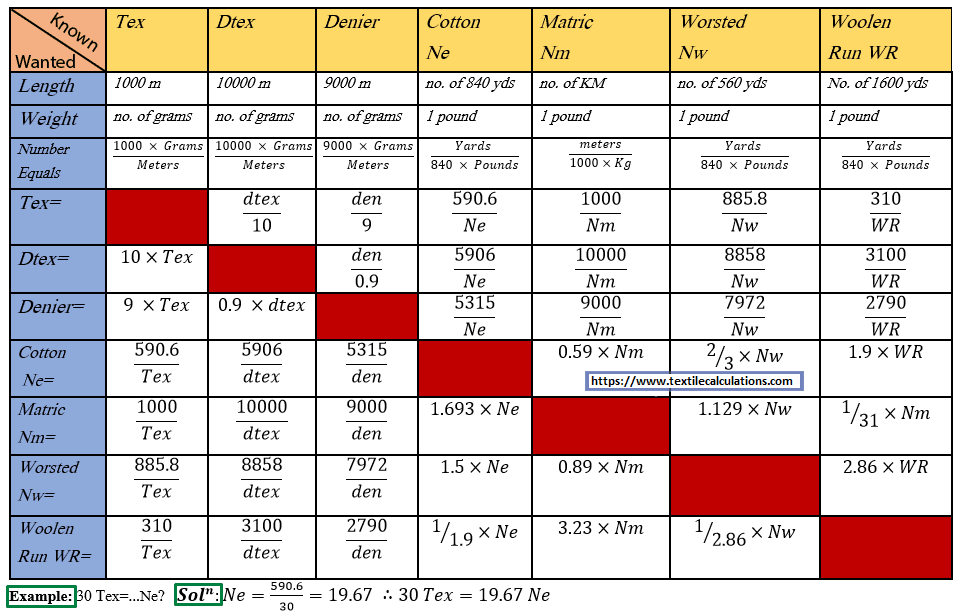Yarn Count Conversion Calculation
Rakib Hawlader
B.Sc. in Textile Engineer
Noakhali Textile Engineering College
Cell: +8801812478393
Definition of yarn count:
Yarn count is a numerical expression that indicates the fineness or coarseness of a yarn. It is defined as the number of yards of yarn per unit weight, usually pounds or grams. In other words, it is the number of yards of yarn that can be obtained from one pound or one gram of yarn.
According to Textile Institute, ‘Count is a number indicating the mass per unit length or the length per unit mass of yarn.’’
For example, a yarn with a count of 20s means that 20 hanks of yarn, each consisting of 840 yards, weigh one pound. Therefore, the total length of yarn in one pound is 20 x 840 = 16,800 yards. Similarly, a yarn with a count of 30s means that 30 hanks of yarn, each consisting of 840 yards, weigh one pound. Therefore, the total length of yarn in one pound is 30 x 840 = 25,200 yards.
So it has seen that Count has the two systems to indicate coarseness/fineness:
- Indirect system
- Direct system
Direct System:
In direct system the count is used for the measurement of weight per unit length of yarn where length is considered as constant.
Here whenever count increases, fineness decreases. (count↑ fineness↓)
In direct system of count commonly used some units of measurement are:
- Tex (1 Tex = 1g/ 1000m)
- Grain (1 Grain = 1g/ 10,000m)
- Denier (1 Denier = 1g/ 9000m)
Indirect System:
In indirect system of measuring count t is used for the measurement of length per unit weight of yarn where weight is considered to be constant.
When count increases, fineness increases. (count↑ fineness↑)
In indirect system of count there are commonly used some subsystems of indirect system are:
- English System (1 Ne = 1 Hank/ lb)
- Metric System (1 Nm = 1 Km/ kg)
For cotton yarn, length of 1 Hank = 840 yards.
Whenever the type of count is not mentioned with the count, it is understood that is the English count cause this count is widely used and known as English cotton count.
Now let’s see the yarn count conversion calculation which helps to calculate the count from one system to another.

Example of yarn count conversion calculation:
Example 1: If the metric count is given 50 then what will be the English cotton count?
Solution:
We know that, Ne = 0.5905 X Nm
Where, English cotton count is expressed as Ne
And Metric count as Nm
So English count will be Ne=0.5905 X 50=30
Ans. 30 Ne
Example 2: If the English cotton count is 30 then what will be the Tex count?
Solution:
Rom the count conversion table we know that,
Tex count = 590.5/Ne
Where, Ne = 30, so Tex count will be = 590.5/30=19.6
Ans.19.6 Tex
From the count conversion tool we can convert each of the count either direct or indirect from one to another count.
You may also like:

I want conversation between linen and cotton yarn
Thanks for your comment. We will update soon.